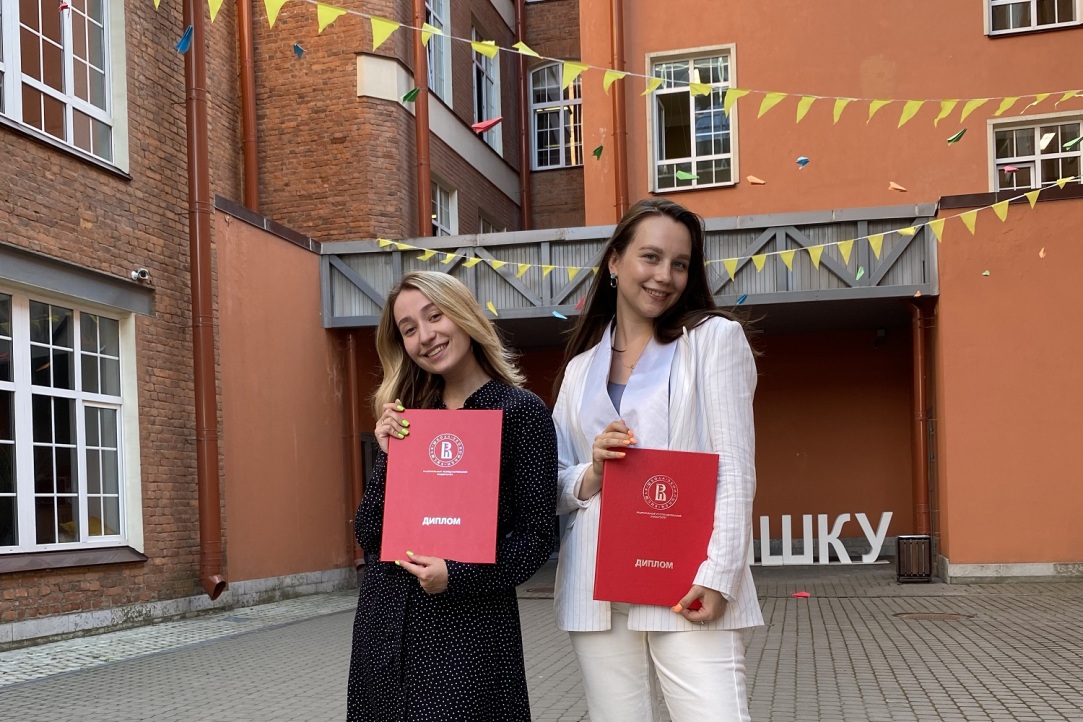'A Topic Which Inspires'
The journal Creativity and Innovation Management has published an article on how collaborations between art institutions, artists and commercial brands influence the consumer experience. The co-authors of the article—Alexandra Berezina, Evgeniya Druzhinina (graduates of the Master's programme 'Arts and Culture Management' at HSE University-St Petersburg), and Elena Zelenskaya (Associate Professor of the Department of Management)—share their impressions of working on the paper.

Articles are one possible form of student theses which involve research work according to the standard of publication in an international journal. The article by Elena Zelenskaya, Alexandra Berezina and Evgeniya Druzhinina 'Brand artification beyond luxury: Evidence from Russian brand-and-artist collaborations' is based on research conducted as a part of thesis preparation on the Master's programme 'Arts and Culture Management'. The article was published in the journal Creativity and Innovation Management, Wiley Publishing House (indexed in Web of Science and Scopus, included in the ABDC Journal Quality List).
Alexandra Berezina and Evgeniya Druzhinina talk about the process.
HOW IT STARTED AND WHY WE WERE THE ONLY CO-AUTHORS ON THE PROGRAMME
In my second year, in October 2020, we got the list of possible thesis topics. Both of us took an interest in the topic offered by Elena Zelenskaya. It was devoted to the collaboration of artists and brands—'The art of marketing: collaboration between artists and brands'. You must agree, it does sound interesting! We were pleasantly surprised when they suggested that we work on the topic together—it is great that HSE University provides opportunities to prepare a thesis in the form of a scientific article, which is usually written by co-authors and in English.
A topic which inspires, the anticipation of a new experience in collaborative work on the article, and an opportunity to be published in a good international journal—we'd made a start.
MODIFICATION OF THE TOPIC AND WHAT OUR PAPER IS ABOUT
It was interesting to watch how the topic changed and expanded. While studying the literature, we chose the key term for our paper: 'artification', a process of brand identity and an image's approach to the art field. We wanted to examine this phenomenon from all possible perspectives: of a brand, an artist or an art institution, and a consumer. As there is already a lot of research looking into artification in the luxury segment, we decided to study other spheres: fashion, hotels and restaurants. We chose artification cases which you might already be familiar with—the collaborations of the sock brand 'St. Friday Socks’ with the Russian Museum, and the restaurant 'MUST' and the hotel 'WYNWOOD' with Pokras Lampas.
In the course of our work, we answered two major questions: 'What is the role of artification for brands and artists in areas other than luxury?' and 'How does the artification product influence the consumer experience?'.
THE MOST INTERESTING MOMENTS AND THE BIGGEST DISAPPOINTMENT
The empirical part of the study was the most interesting—especially conducting in-depth interviews with experts. We talked to the founder of 'St. Friday', the art-manager of 'MUST' (over a cup of coffee, looking at the walls painted by the artist), the director of 'WYNWOOD' and the PR manager of the Russian Museum. The material turned out to be so cool that it could be broken down into quotes, which we did.
The biggest disappointment was that we did not manage to talk to Pokras Lampas directly due to his busy schedule. We also wanted to talk to Andrey Berger about his collaboration with a watch brand and even planned to go to Moscow, but we couldn't do it for the same reason. So we were only able to study the artist's perspective by analysing secondary data.
WE COULD NOT AVOID DIFFICULTIES
Analysis of the quantitative data—230 online questionnaires filled in by the respondents—was the hardest challenge in the work process. As philologists, we were afraid of even thinking about such abbreviations as STATA and ANOVA, though we regularly came across them in articles by other authors. But to make our research complete, we needed statistical analysis, so we figured it out.
The publication process was not easy or fast either. Firstly, we had to choose a journal. Then we got a rejection from a top-ranked journal which reviews articles rather strictly. Only a year later, the article was published in the journal Creativity and Innovation Management.
GRATITUDE TO OUR THESIS SUPERVISOR
Elena Zelenskaya, our thesis supervisor and co-author, helped and supported us throughout our first experience of preparing scientific publications. Whenever we talk about 'we' and 'our work', we mean the three of us. We had regular calls to discuss the course of the research. Professor Zelenskaya re-read the text countless times and made edits and comments. But the most important thing is that after our graduation, she finalised our article and got it published in a great journal. We are very grateful for it and congratulate her on it!
Elena Zelenskaya, Associate Professor of the Department of Management at HSE University-St Petersburg

The published article is the first scientific result of research into art collaborations by the colleagues and students of the Master's programme 'Arts and Culture Management'. This topic is incredibly timely. We see that more and more art institutions cooperate with brands and create joint products. It helps brands to approach the art world and add new colours to their images. What's more, consumers get a chance to own not just an object with utilitarian functions, but a piece of art, and show others their individuality and taste.
For students without experience, publishing articles in top-ranked journals is extremely hard, so in our programme, we pay a lot of attention to the exchange of experience between lecturers and students, and to creating an atmosphere of co-authorship. This is exactly what the Research and Study Group 'Innovations in Culture and Arts' does. We regularly hold open seminars where students, PhD students and colleagues give speeches. We invite everyone to subscribe to the newsletters and join the seminars.

